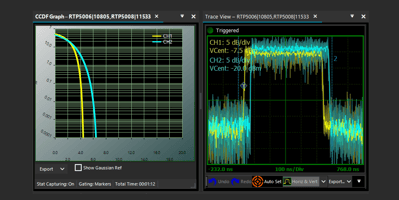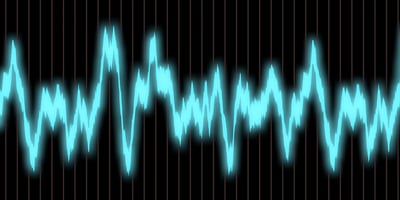Error vector magnitude (EVM) is an important metric for analyzing and optimizing digital...
How Do You Characterize DUTs from 67 to 98 GHz Accurately? Start with the Right GaN T&M Amplifier
Gallium nitride (GaN) amplifiers offer the superior performance needed to drive advancements in applications spanning wireless networks, satcom, radar, and sensing – especially at higher frequencies from 67–98 GHz. Beyond empowering innovation, GaN amplifiers play a critical role in the test and measurement (T&M) infrastructure that supports the successful design, debugging, and validation of these next-gen systems.
This blog explores the advantages of GaN amplifiers in various industries and how T&M power amplifiers enable precise characterization of high-power DUTs, highlighting custom Maury Microwave T&M driver amplifier solutions.
GaN Amplifiers in Next-Gen Systems
Next-gen systems are reaching higher and higher frequencies, such as those between 67 – 98 GHz, encompassing the upper mmWave to lower THz spectrum. This range offers significant advantages across several industries, including:
Telecommunications: The upper mmWave bands are ideal to support the high data rates, ultra-low-latency, and high-reliability required for emerging, high-capacity 6G networks.
Industrial and Medical: While operating at higher frequencies, medical and industrial imaging technologies achieve better resolution to enhance the details of diagnostic screenings and the detection of faults in structural components. Depth sensing is also improved, enabling a better estimation of how far an object of interest lies below a surface.
Defense: Military radar and advanced electronic warfare (EW) systems utilize higher bands for superior threat detection, increased bandwidth for jamming operations, and higher resolution.
Amplifiers are core components in these technologies but operating in the 67 – 98 GHz presents several challenges for those using traditional semiconductor technologies. For example, gallium arsenide (GaAs) or silicon are often inadequate in terms of efficiency, output power, and thermal stability.
This is where GaN technology sets itself apart. With wide bandgap, high electron mobility, and excellent thermal performance, GaN amplifiers achieve higher power output, greater efficiency, and improved linearity. These attributes meet signal integrity requirements across long distances and enhanced signal-to-noise (SNR) performance for 6G systems and precision medical/industrial sensing. In the defense sector, GaN amplifiers operating at around 94 GHz are currently under development to provide the performance that modern radar and EW systems demand.
T&M Driver Amplifiers for High-Power DUT Characterization
As high-frequency, high-power GaN amplifiers continue to develop and push technological limits, T&M capabilities must evolve in tandem for accurate measurements, analysis, and performance validation. Across the 67–98 GHz band, performance characterization requires precise instrumentation and methodologies, including:
- S-parameter measurements
- IV and pulsed IV characterization
- Power sweep testing
- Load-pull validation
- Long-term reliability testing
To support these complex tasks, a range of specialized hardware is essential, including:
- Vector network analyzers (VNAs) with frequency extenders
- Precision impedance tuners
- High-stability signal sources
- Wideband driver amplifiers
- Directional couplers
- Robust RF interconnects, including cables, adapters, and waveguide components
In terms of driver amplifiers, the designed power output of DUTs continues to increase—often reaching the multi-watt level at frequencies as high as 98 GHz—and the amplifiers used to drive these DUTs must also scale accordingly. Driver amplifiers used in T&M setups must be capable of delivering several watts of power without introducing distortion or compromising measurement fidelity.
Figure 1 shows a typical setup for power sweep and load-pull testing, where a driver amplifier boosts the signal before reaching the DUT to maintain the integrity of test results. Instruments such as the vector network analyzer (VNA) with frequency extenders and impedance tuners at the source and the load offer precise impedance and power level control.

For more technical detail on the measurement technique, please read the Maury application note, “On-Wafer, Large-Signal Transistor Characterization from 70–110 GHz Using an Optimized Load-Pull Technique.”
mmWave Innovation with Maury Microwave T&M Amplifiers
Recognizing these demands, Maury Microwave has developed a range of high-performance driver amplifiers tailored for T&M applications in the 67–98 GHz range. These amplifiers are specifically designed to ensure DUT characterization and are not constrained by insufficient drive power.
Examples of current product offerings include:
- An integrated 90–98 GHz, 6W power amplifier
- A high-power 92–98 GHz, 30W amplifier designed for robust DUT validation
- Custom solutions from 67 to 98 GHz
These amplifier solutions are the result of Maury Microwave’s ongoing commitment to support mmWave innovation by ensuring that measurement environments can match the performance of cutting-edge GaN devices.
More information is available in the datasheets below.
 |
 |
|



